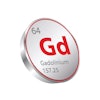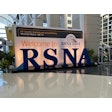The deadline is getting closer: Providers of advanced imaging services who bill for technical components must become accredited by January 1, 2012. The U.S. Centers for Medicare and Medicaid Services (CMS) has designated three organizations as accrediting bodies. Which program is best for your facility?
At this week's Radiology Business Management Association (RBMA) annual meeting in Austin, TX, representatives from the three organizations -- the American College of Radiology, the Intersocietal Accreditation Commission, and the Joint Commission -- presented the benefits of each of their accreditation programs.
The American College of Radiology
The American College of Radiology's (ACR) accreditation program helps facilities meet CMS requirements with professional technical staff who guide providers through each step, said Leonard Lucey, legal counsel and senior director for nonbreast imaging accreditation at the ACR. Once a facility's materials are accepted, the accreditation is issued within 90 days.
The ACR's accreditation application process begins on its website, Lucey said. (Click on "Accreditation" and then on "Getting Started: Apply for Accreditation.") There is no fee for this initial application. Forms include a survey agreement, a HIPAA business associate agreement, modality forms, a personnel list, an equipment list, and application instructions and a checklist.
After the ACR has received the online application, it sends testing materials to the facility, which has 45 days to complete and return them to the organization -- although the ACR offers extensions to facilities that need additional time, Lucey said. When the ACR has received the completed testing materials, it sends images -- both clinical and phantom -- to reviewers within a week. When reviewers' feedback returns, the ACR issues a final report and sends this report to the facility within 21 days, according to Lucey.
"At any time during the three-year accreditation, sites are subject to a random site visit either from their accrediting organization or from CMS," Lucey said. "By CMS requirements, these site visits are unannounced. Sites will receive a visit only once during the three years unless it's experiencing problems."
Fees for the ACR accreditation process are by modality, with a base fee of $2,400 for CT, between $2,400 and $2,800 for MRI, and $1,200 each for PET and nuclear medicine, plus $600 per submodality. Facilities with three or more modalities (except mammography) get 10% off; practices with multiple sites also receive discounts, according to Lucey.
Lucey offered meeting attendees a few tips on how to prepare to meet accreditation requirements:
- Put one person in charge of organizing the accreditation material
- Make sure any clinical images submitted for review are approved by a physician
- Stay current with accreditation requirements
- Apply or reapply with plenty of time
"Watch for updates, work closely with your accrediting organization, and remember: It's all coming up on January 1, 2012," he said.
The Intersocietal Accreditation Commission
The Intersocietal Accreditation Commission (IAC) provides imaging accreditation for five modalities (nuclear medicine, MRI, CT, noninvasive vascular testing, and echocardiography) via five divisions. Facilities begin the accreditation process on the IAC's website; there is a one-time fee of $200.
With the IAC, the process begins with the facility completing the application; uploading protocols, policies, and procedures; and copying cases to electronic media and sending them to the commission. The application is reviewed for completeness and forwarded to two clinical reviewers; once those reviewers have made a recommendation, the IAC communicates a final accreditation decision to the facility. Length of time from submission to notification is approximately 45 to 75 days, depending on how complete the application is, according to CEO Sandra Katanick.
"We encourage facilities to get on this now," she said. "Don't wait until the last minute. Allow yourself a six-month window for the whole process, especially since tackling accreditation is challenging, on top of a facility's regular workload."
Fees for MRI and CT accreditation are $2,400 for the first unit and include one testing area; the IAC charges $400 per additional testing area and $1,200 per additional unit.
For nuclear cardiology, nuclear medicine, and PET, the commission charges $3,300 for one area and $3,800 for a comprehensive accreditation that includes all cameras.
Facilities do not have to buy a special phantom, Katanick said. Multiple-site discounts are available, and there is a fee calculator on the IAC website to help facilities estimate the total cost.
Once accreditation is granted, it is valid for three years from the date of the IAC's decision. If the accreditation is delayed, the IAC identifies issues related to quality and notifies the facility about them; accreditation is granted once these issues are corrected. If the commission is unable to make a decision based on a facility's written application, it conducts a site visit, according to Katanick.
In addition, in 2010 the IAC implemented a policy stating that every facility granted accreditation will receive either a random audit or site visit at least one time within their three-year accreditation period to validate continuing compliance with the standards.
The Joint Commission
Accreditation is a collaboration between the accrediting organization and the facility, according to Michael Kulczycki, executive director for the ambulatory accreditation program at the Joint Commission.
"Whether a facility has one modality or multiple modalities, our accreditation program consists of one application, one survey, and one fee," Kulczycki said.
The Joint Commission conducts site visits, using patient care records in its accreditation process. Physician surveyors "follow" the route of three to four patients over a two-day, onsite survey. A facility may apply for an advanced diagnostic imaging (ADI) process for additional modalities as well, according to Kulczycki. The ADI option is conducted by a clinician surveyor and a specialist for that modality who evaluate the facility's infrastructure, oversight and supervision, and monitoring and quality control activities.
For a Joint Commission accreditation, a facility makes a deposit with its application, which is then credited to ensuing fees -- the total fees are spread across three years, with 60% due in year 1, 20% in year 2, and the final 20% in year 3. Single-site imaging center accreditation with the ADI option is about $10,940, although pricing is driven by patient volume, Kulczycki said. And the facility doesn't have to wait to get feedback on the visit.
"Our surveyors leave a preliminary, written report onsite when the visit is through, so that the imaging center knows the basic findings right away," he said.
Facilities should apply by July 2011 to ensure that they'll have their accreditation in hand by the January 1, 2012, deadline. They should select a "ready date" that is three to six months away; then surveyors conduct their unannounced visit during that time frame.
The Joint Commission renders its decision about 10 days after a center has submitted any proofs of corrections, Kulczycki said. After it initially accredits a facility, the Joint Commission reviews the facility's annual self-assessment and performs an onsite survey every three years.
"We look at the entire organization, not just at modalities in a facility," Kulczycki said. "We take into consideration all the things the facility does to contribute to patient and staff safety."
The Joint Commission posts its currently accredited organizations on its Quality Check website. A facility can use the Quality Check feature to search for others in a noncompeting market that have used Joint Commission services, and call them for recommendations.
In the end, no matter which organization a facility chooses for accreditation, the benefits are clear, according to Katanick.
"Imaging accreditation minimizes variances between facilities, technologists, and physicians," she said. "It decreases duplicate exams, and allows quality to be evaluated through independent peer review. All this makes for better patient care."
By Kate Madden Yee
AuntMinnie.com staff writer
September 28, 2010
Related Reading
Medical groups tell Congress more radiation rules are needed, March 1, 2010
Congress surprised at lack of medical radiation oversight, February 26, 2010
CMS taps three for accreditation, January 29, 2010
ACR revises accreditation program, December 15, 2009
Imaging centers gear up as UnitedHealthcare accreditation deadline looms, February 6, 2008
Copyright © 2010 AuntMinnie.com




















